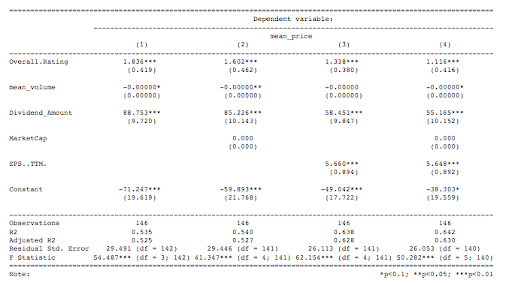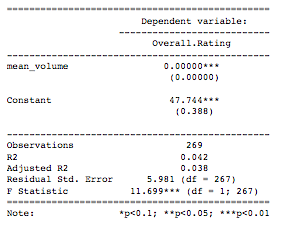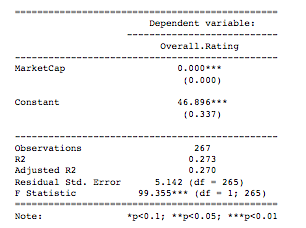
VANESSA THOMPSON – MARCH 11TH, 2020
EDITOR: ABHISHEK ROY
In 2019, the notable clothing company, Lacoste, launched a viral social-good campaign to increase awareness for endangered species by removing their famous crocodile logo from their clothing and replacing it with symbols of endangered animals. Corporations fund campaigns for social or environmental good through their Corporate Social Responsibility (CSR) departments. The charter of a CSR department is to make sure that a company behaves ethically, gives back to the community, meets standards of transparency, supports employee welfare, encourages environmental sustainability, and spearheads community engagement among other initiatives.
Fortune 500 companies spend $20 billion on CSR efforts collectively. To put that in perspective, that is 0.1% of total revenues and 1.8% of total profits. A corporation’s incentive to promote CSR activities is two-fold: to advertise their brand and to ensure employees’ loyalty. Research shows that employees are willing to take lower wages to work at a company with better CSR programs. CSR has become increasingly popular, particularly among larger companies, since many consumers are now more conscious about sustainable shopping. For instance, while in 2011, “just under 20% of S&P 500 companies published a sustainability or CSR report,” by 2013, that number had increased to ”72%.”
Although firms perform CSR to improve their reputations with consumers and employees, the goal of the corporation is to serve the shareholders. According to Nobel Laureate economist Milton Friedman, pursuing the shareholder’s interest is the only purpose of a company while all other callings are distractions. Thus, diverting $20 billion to anything other than shareholder dividends would warrant an investigation of the integrity of the CEO by the board. Finding a relationship between CSR and the stock’s value would support corporate managers in allocating money for social and environmental causes. The multilinear regression below analyzes this relationship in depth and finds support for working with corporations to improve and grow their CSR.
Background:
Historically, shareholders have the most significant decision-making power in company operations. Shareholders hold the right to replace the board of directors (who manage the CEO), the right to receive dividends (payments incentivizing their stock ownership), the right to vote on key issues, and the right to claim proportionate allocation of proceeds if the company liquidates. CEO’s are appointed by the board of directors and shareholders to run the company, and act in the shareholders’ interest. Unfortunately, the shareholders’ interests are usually short-term because they want to see their dividends increase as well as the overall value of their stock as soon as possible. This is one of the main reasons companies strive to achieve maximum profits quickly without regard to long-term consequences.
Method:
Using CSR data from 9,000 companies, we analyzed 271 companies that are publically listed on the stock exchange. This database ranks CSR departments on a score ranging from 0 to 100 (100 = positive rating), but no company got higher than 76 or lower than 21. The rating takes into account numerous aspects of social good below with a multitude of indicators and over 200 sources.
|
Community
|
Workers
|
Environment
|
Leadership
|
Each sustainability score was static and did not show changes over time. CSR scores are only updated every two years due to limited information from CSR departments. Thus, I took averages of all stock indicators for the past two years. For data on market capitalization, stock price, earnings per share (EPS), and volume, my data came from Yahoo Finance. For dividend data, I used marketbeat.com. The EPS and Market Cap columns are the only columns that represent the most recent data instead of the two-year average. I created several models to account for this discrepancy.
Model 1
mean_price =𝛃0+𝛃1CSR +𝛃2mean_volume + 𝛃3mean_dividend_amount
Model 2
mean_price =𝛃0+𝛃1CSR +𝛃2mean_volume + 𝛃3mean_dividend_amount + 𝛃4MarketCap
Model 3
mean_price =𝛃0+𝛃1CSR +𝛃2mean_volume + 𝛃3mean_dividend_amount + 𝛃4EPS
Model 4
mean_price =𝛃0+𝛃1CSR +𝛃2mean_volume + 𝛃3mean_dividend_amount + 𝛃4EPS+𝛃5MarketCap
Model 5
log(mean_price) =𝛃0+𝛃1log(CSR) + 𝛃2log(mean_volume) + 𝛃3log(mean_dividend_amount) + 𝛃4log(MarketCap)


CSR rating has a significant positive correlation with stock price. The changes are normally small. This should make sense since for every 1 point increase in CSR rating, the estimated stock price should only increase by a few cents. When the log was imposed on the variables in model 5, the relationship between CSR rating and stock price became negative. It is also worth noting that this relationship was not statistically significant.
Even though model 5 has the highest R^2, I would be skeptical of model 5 since all the other models show a positive significant relationship with CSR rating and stock price. In addition, when I ran recent stock price (not two year average), it also showed a significant positive relationship. Lastly, a simple linear regression on the two variables shows a positive and statistically significant result indicating a relationship between stock price and CSR efforts.


A scatter plot between CSR rating and stock price shows a linear trend although there are a few outliers. As noted above, our sample size in this visualization is 271 publicly traded companies.

A deeper investigation of each of the relationships between the CSR rating and variables related to the stock reveals something interesting.



This data shows that a company’s market capitalization predicts a higher estimated CSR rating. We can infer from this that larger companies have more means and motive to increase CSR efforts. This could be because they are under more scrutiny from the public or due to the fact that they can use viral social good campaigns to gain a competitive edge. As Forbes reported, “Corporate social responsibility (CSR) is largely associated with big companies. They are more high profile and thus attract more media attention, and they are particularly concerned to protect and enhance their reputations with the broader public as well as key stakeholders.”
Due to the statistically significant relationship between the CSR overall rating and mean stock price, we could infer that Forbes’ statement holds true with this data. In addition, we see that a simple linear model between CSR rating and market capitalization, stock volume, and dividend amount support this theory.
Conclusion:
Although CSR is for the self-interest of the firm and helps large companies protect themselves from scrutiny, we should not entirely discredit the significant beneficial impacts of their donations. Last year, Google launched a virtual reality campaign to allow people in countries where homosexuality is illegal to walk in Pride parades around the world, giving people the chance to celebrate self-acceptance without having to risk their lives. Levi’s has spent $1 million to ensure environmental farming practices and living wages for the people who farm the cotton that goes into their jeans. That is an extra $1 million that Levi’s did not legally have to spend, but they created these initiatives regardless of any environmental or social regulation. Also, Friedman might believe that all CSR is a waste of time and shareholder’s money, yet these initiatives impact the lives of those supporting the company, offering long-term profitability.
These initiatives show that companies are open to social responsibility and that there is a relationship between social and environmental action and shareholder benefits. Thus, as social activists and students at UC Berkeley, hostility and protesting corporations should be our last resort. UC Berkeley students interested in impact and social activism can use this information to encourage corporations to take positive action. Large companies can have a large impact to further the goals benefiting our planet and communities. The S&P 500 spends only 1.8% of its profits on CSR.1 We can push them to dedicate more dollars and awareness toward the welfare of the planet. Big companies could be a great ally in fighting climate change and increasing equality around the globe.
1Calculated from the net sum spent on CSR and net profits of S&P 500.
Featured Image Source: Green Resort
Disclaimer: The views published in this journal are those of the individual authors or speakers and do not necessarily reflect the position or policy of Berkeley Economic Review staff, the Undergraduate Economics Association, the UC Berkeley Economics Department and faculty, or the University of California, Berkeley in general.



